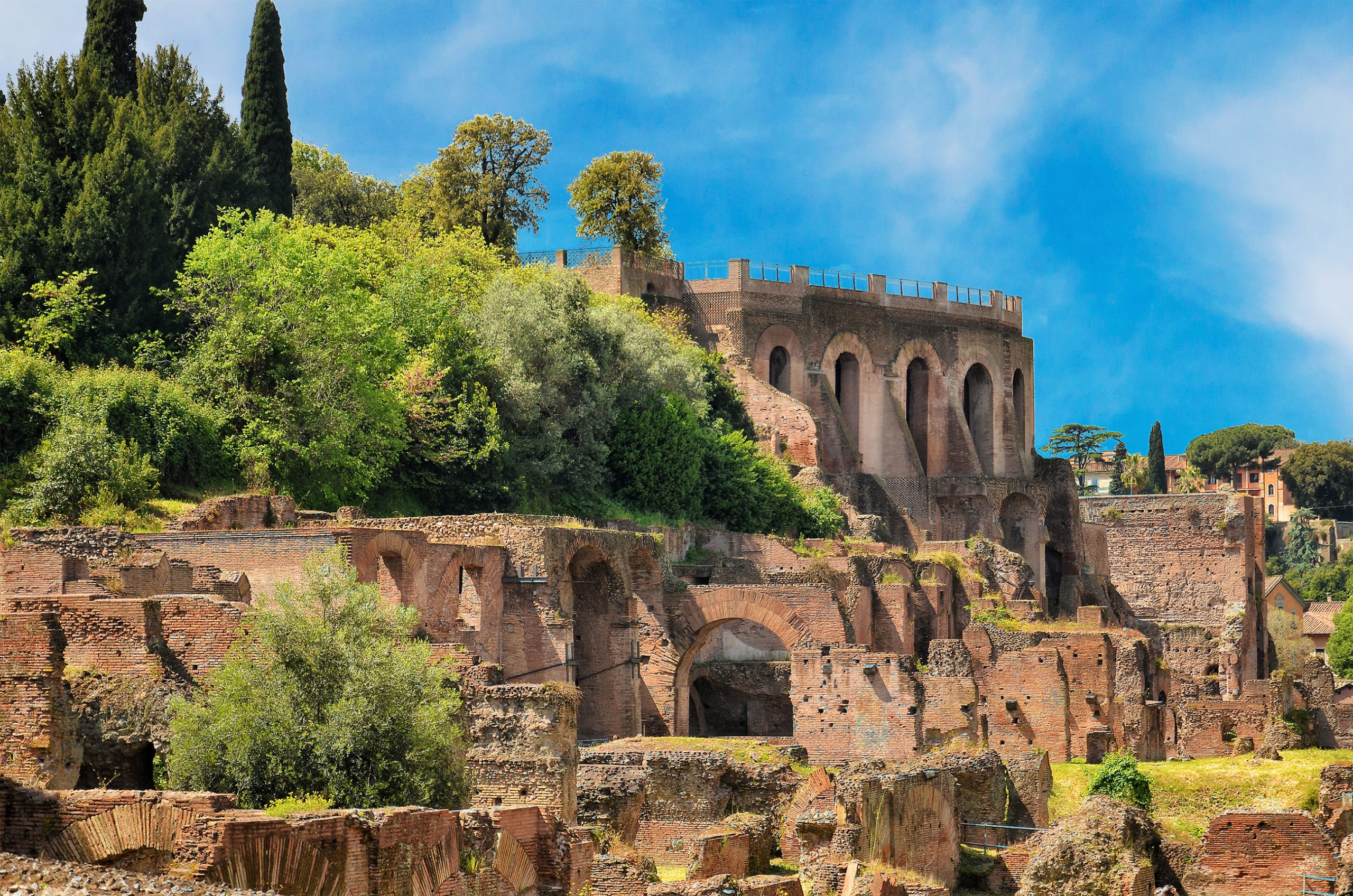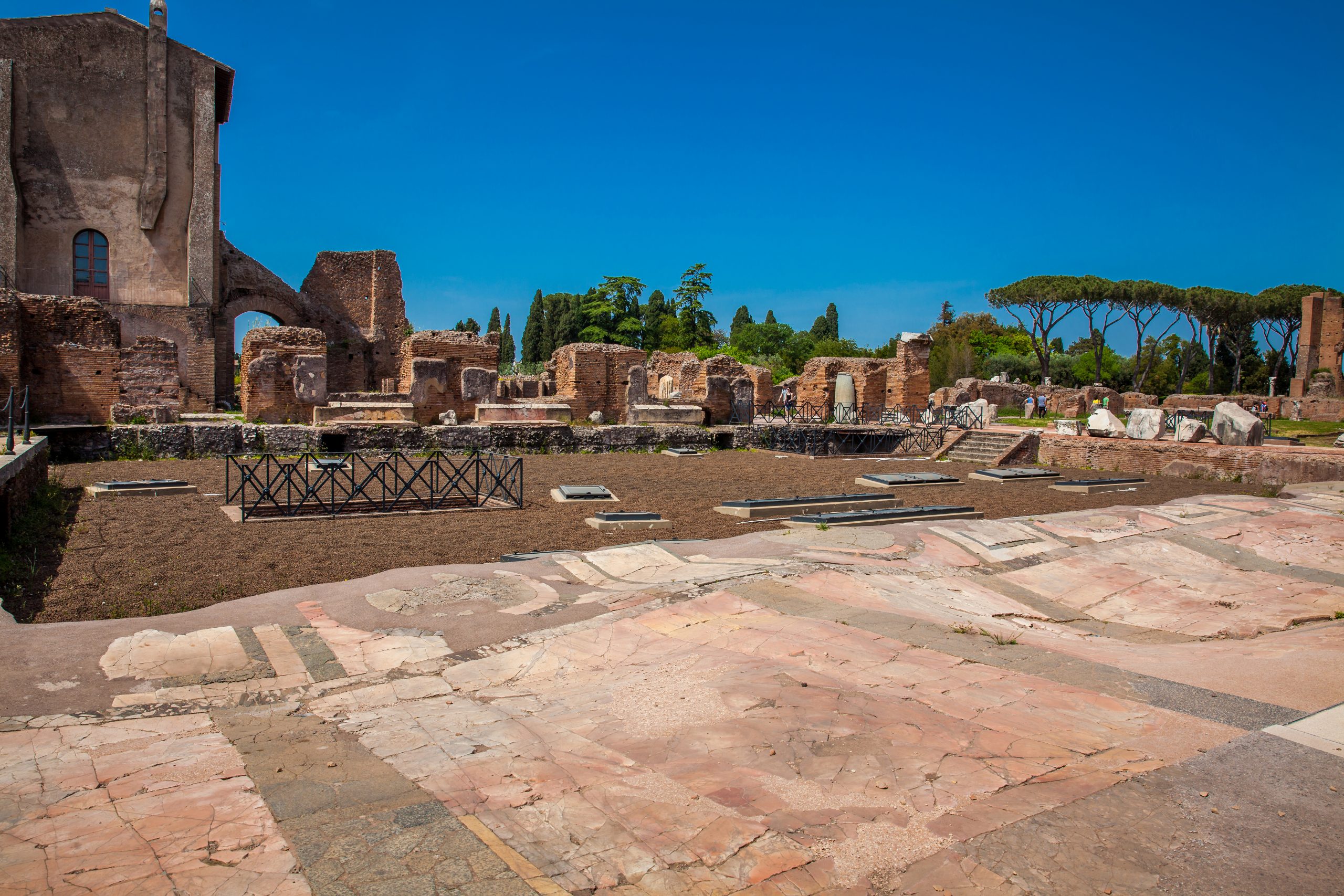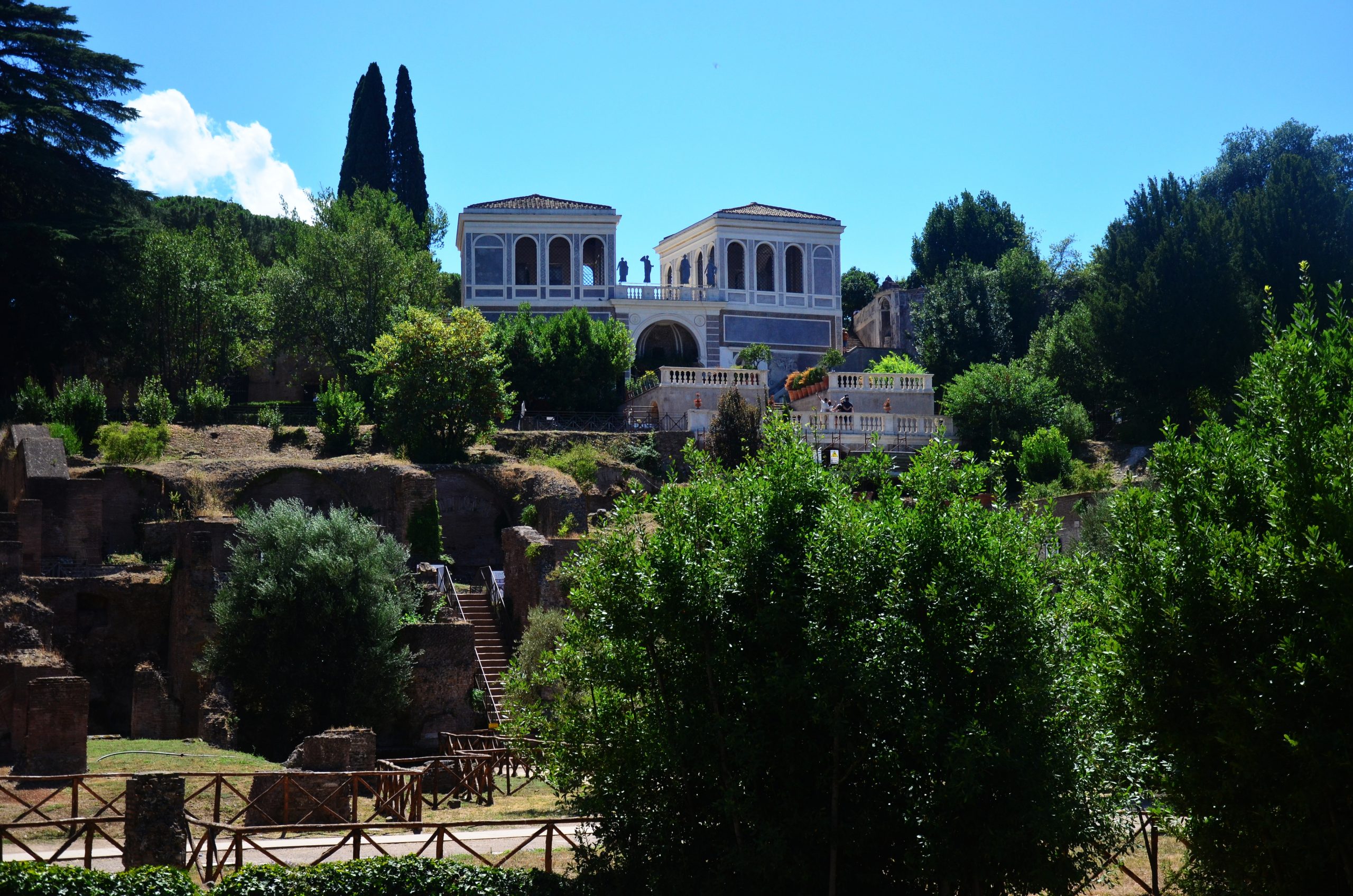DOMUS AUGUSTANA
The Domus Augustana is the modern name given to the central residential part of the vast Roman Palace of Domitian, in antiquity the name may have applied to the whole of the palace. Rather than relating to the emperor Augustus personally it refers to the later Roman meaning of Augustus as ‘Emperor’. The name is often confused with the nearby Domus Augusti, the House of Augustus.
The Domus Augustana was built by Rabirius between 81 and 92 AD. Rabirius used water and coloured marble in enormous quantities for the palace but also decorated lavishly in gold. The aspect that impressed the most was the sheer size and height of the space. Grandeur like this was reserved for the Gods but Domitian flaunted himself as a living god – probably the reason for his assassination only four years after the palace was completed.
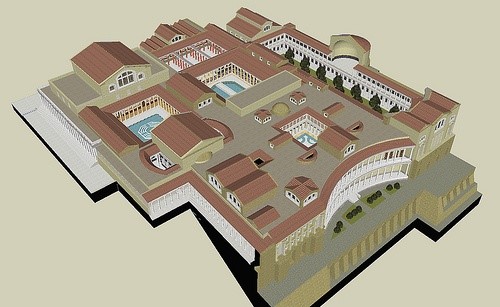
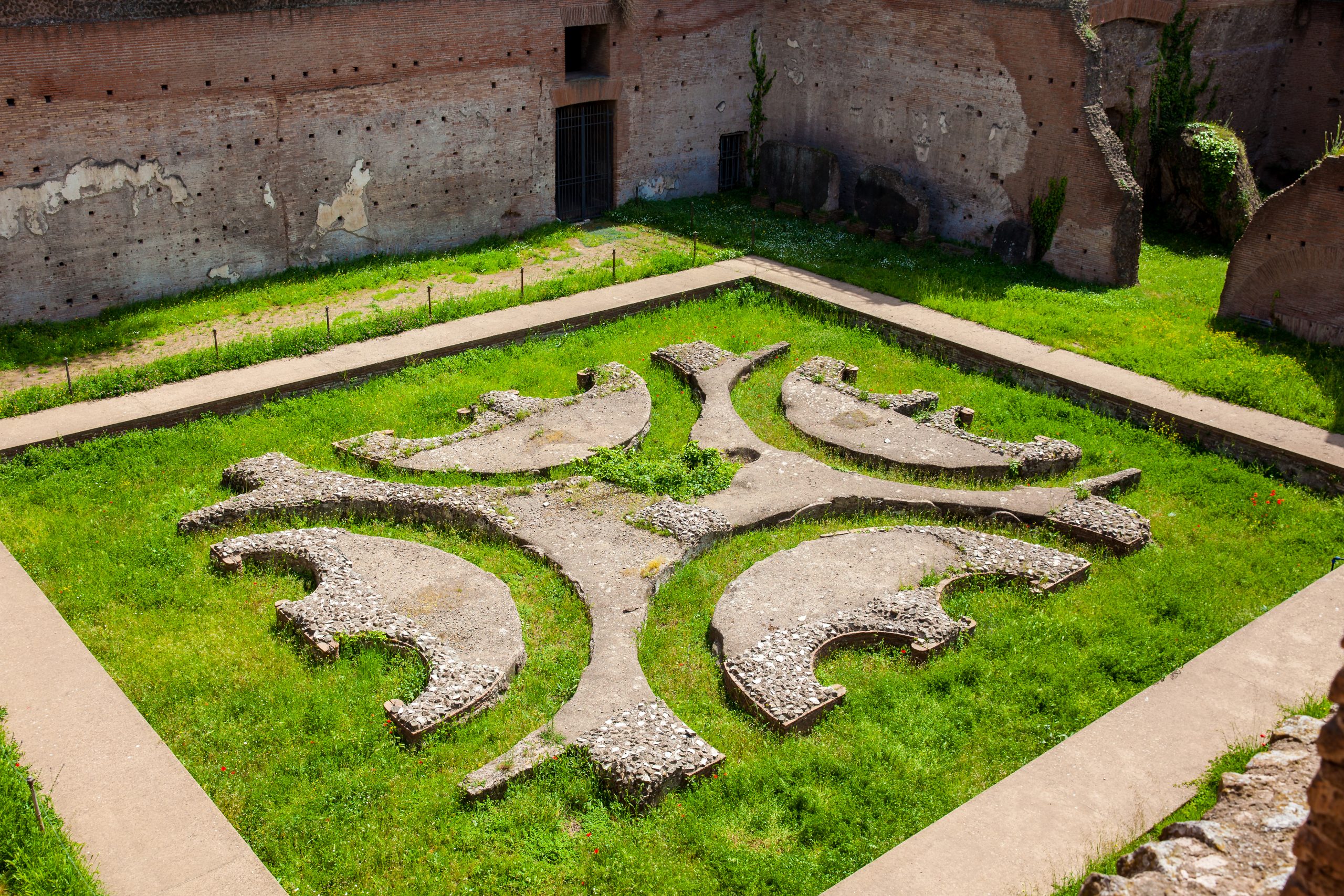
The Private residence
Domitian’s private quarters were located in a courtyard complex built around yet another peristyle garden. There were two levels: the upper level (where modern visitors look down from) was accessed by a large two-flight staircase and contained the many residential rooms of the emperor; the lower level courtyard was actually below ground and contained a large fountain surrounded by dining areas with miniature pools to refresh diners. The central fountain has a motif of four peltas (the shields used by the famous female Amazonian warriors). Frescoes adorned the walls and the courtyards and columned porticoes were covered in exquisite marble, statues decorated the fountain and the portico.
The exedra, was a curved gallery on the southwest side of the Domus Augustana which overlooks the CIRCUS MAXIMUS (visitors can enjoy the view from this platform today). With the Aventine Hill in the background and the Tiber river off to the right, the view from the imperial palace was breath-taking. High above the riotous crowds, from the comfort of his own residence, the emperor could cheer along with the riotous fans below as the charioteers raced the track of the Circus Maximus.
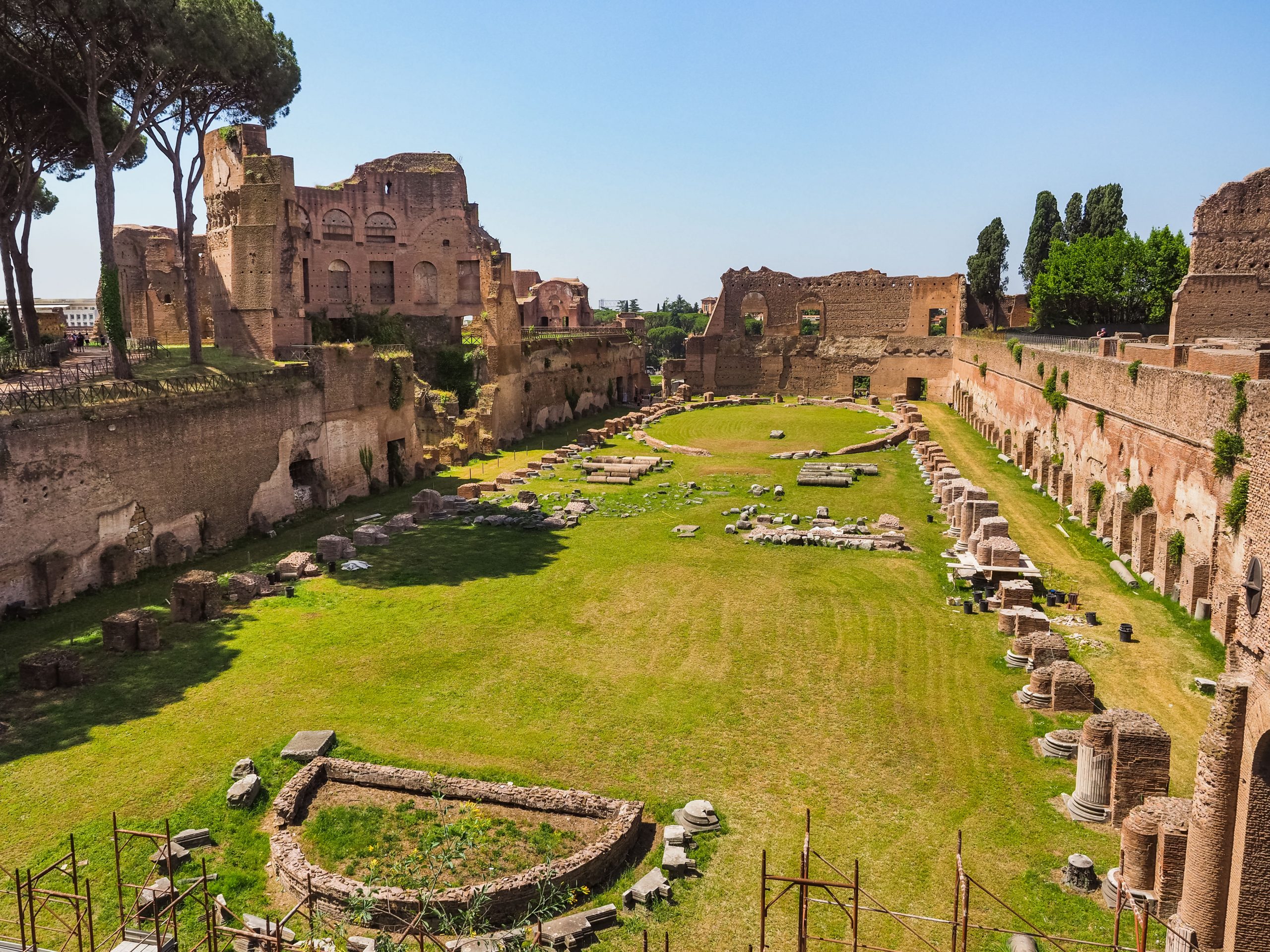
THE SO_CALLED STADIUM OF DOMITIAN
The sunken so-called stadium 10 metres below the accessible level is located on the eastern side of the Domus Augustana. It is also known as the Circus Agonalis and the Stadio Palatino, so called because archaeologists assumed races were held here due to the similarity in shape to a stadium.
The sunken garden, also designed by the architect Rabirio, was an elongated rectangle, straight on its northern side, curved to the south. It was surrounded by a two-storey colonnade with frescoed walls. While the precise function of the stadium remains unknown, the remains of a large oval water feature suggests it was a private garden. Plutarch tells us Domitian walked ‘rain or shine’ in his private garden which was landscaped with walkways, flower beds, and precious statues; the covered colonnade would certainly have made this possible in bad weather.
The area was excavated during the 18th century, but the column and marble veneer was looted long before. Columns of granite and marble, capitals and decoration fragments still lie scattered on the grounds of the stadium.
